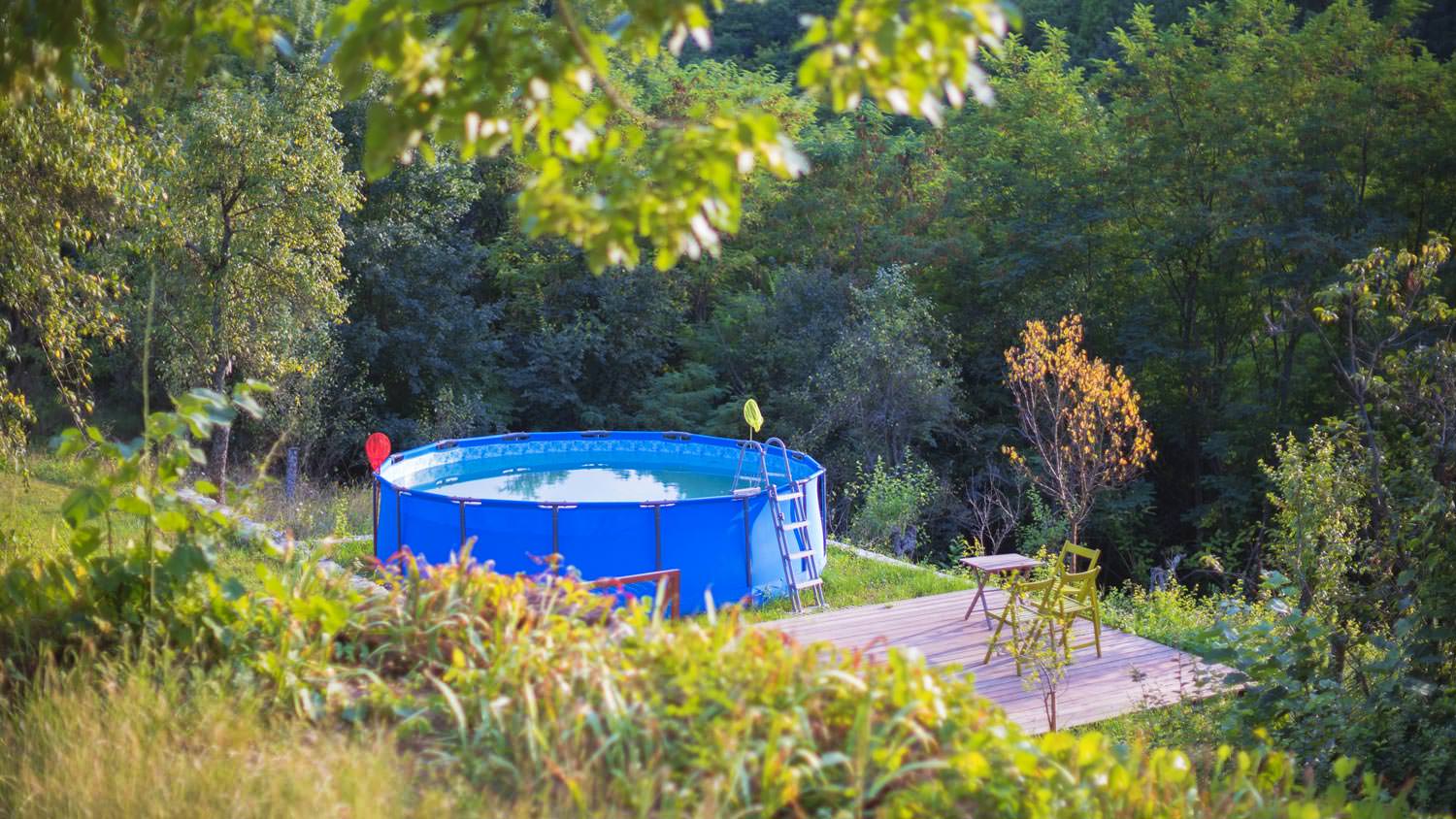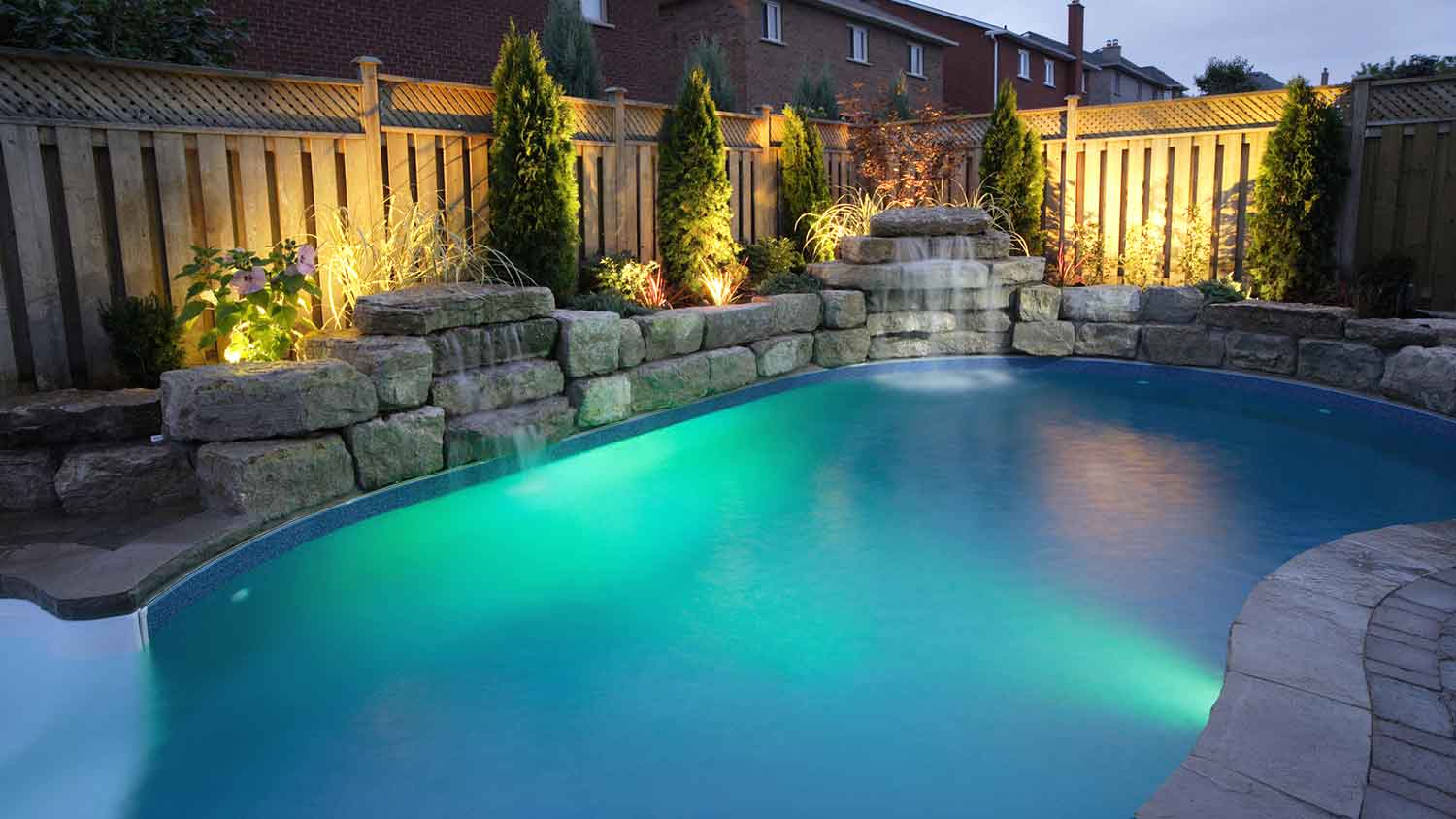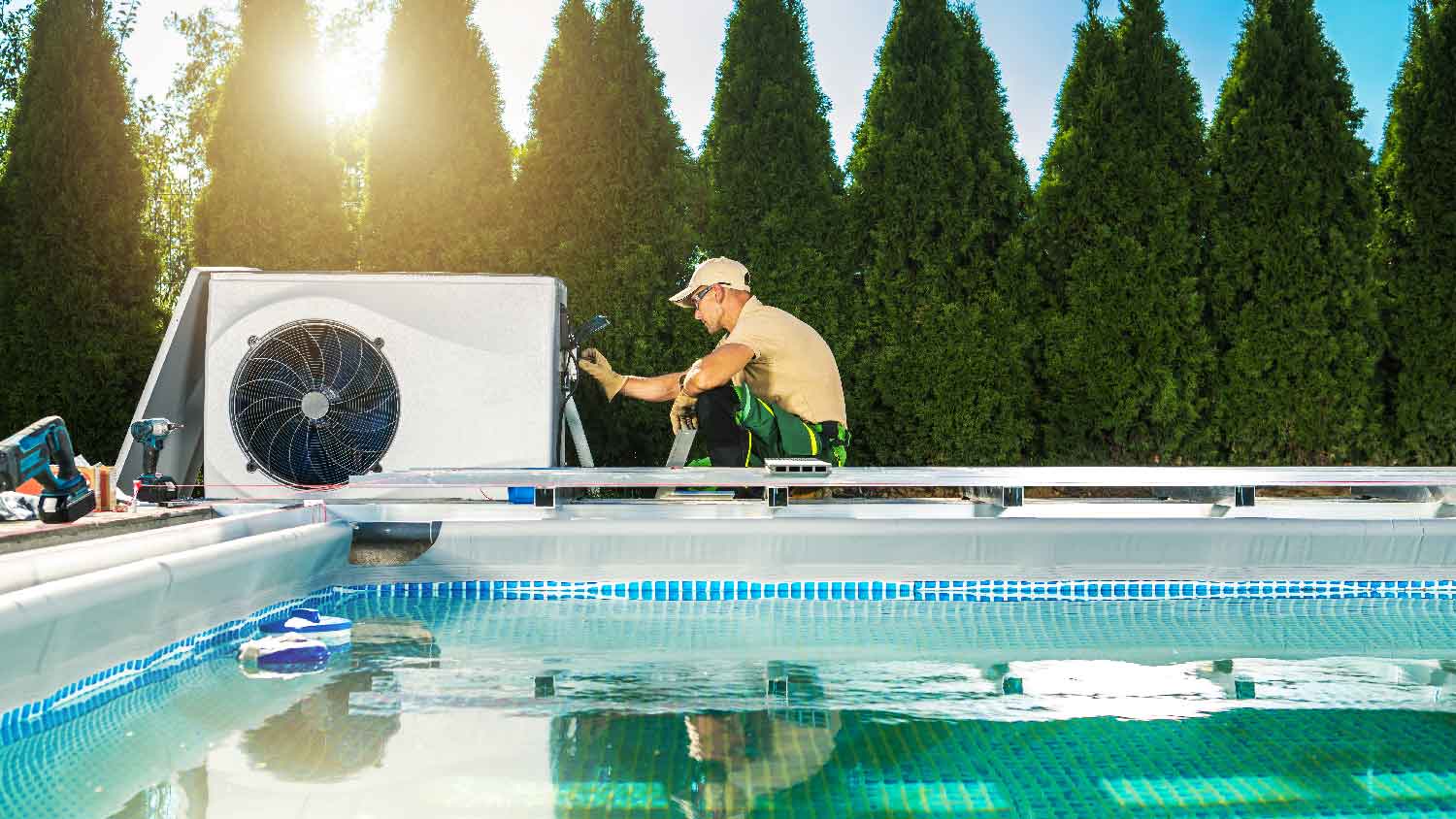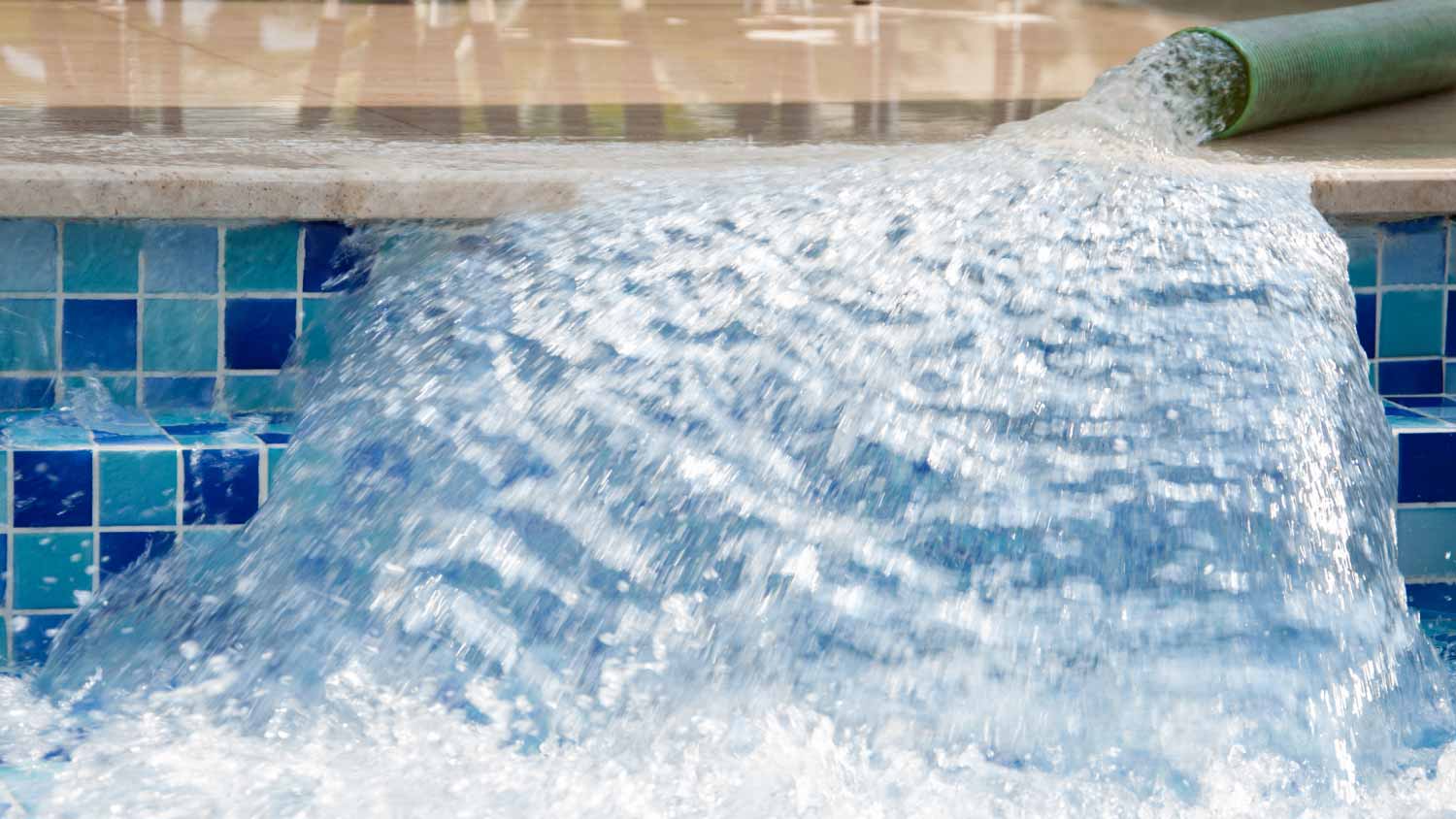
It’s time to kick back and cool down for the summer. If you’re ready to make a splash, check out how much an in-ground pool costs with this guide.
Replacing a pool liner costs an average of $2,504


Average costs for pool liner replacement range between $1,242 and $3,871, with an average total of $2,504.
Factors such as pool size, type, and labor fees have a significant impact on pool liner replacement pricing.
Pool liner replacement ensures a well-maintained swimming area free from leaks.
Addressing liner issues promptly by hiring a professional helps avoid more expensive damage down the line.
This article was updated using automation technology and thoroughly reviewed for accuracy by HomeAdvisor Editor Ryan Noonan.
Pool liner replacement costs an average of $2,504, with most projects costing within an average range of $1,242 to $3,871. Key factors like pool size, liner type, and labor determine the final price, and most homeowners pay $5 per square foot. Budgeting for this project is crucial, and hiring a professional can help ensure a seamless, long-lasting installation.
Several variables impact the cost of installing a pool liner, including size and shape, the type of pool, and the time of year.
The size of the pool is the single biggest determinant of any pool repair cost. The average cost is $5 per square foot.
| Pool Size (Feet) | Average Cost |
|---|---|
| 16x32 | $2,560 |
| 18x36 | $3,240 |
| 20x40 | $4,000 |

There are three common liner styles—overlap, uni-bead, and beaded—each with a different price point and lifespan.
| Liner Type | Description | Average Cost (Liner Only) |
|---|---|---|
| Overlap | Drapes over the pool, secured with clamps—easy to install | $200–$600 |
| Unibead | Has a curved piece to tuck over pool edge—lasts longer than overlap liners | $400–$900 |
| Beaded | Snaps into place using a track on the pool wall—lasts longer than unibead liners | $500–$1,000 |
A 28-millimeter liner costs $300 to $500 more than a standard 20-millimeter option. The extra thickness stands up better to harsh weather and everyday wear, although installation is more challenging and the upfront price is higher.
Your pool’s shape impacts the cost of your liner. Round pool liners are less expensive than similarly sized rectangular ones. If you have a custom pool with an irregular shape, you’ll need a custom-made liner, which can be significantly more expensive than a standard-shaped one.
In-ground pool liners cost more than above-ground ones. An above-ground pool liner costs between $500 and $900, while an in-ground pool liner costs between $1,200 and $2,100.
Patterned or darker liners cost more than the classic solid blue, and repairs can be more challenging later, which can increase long-term costs.
Your pool’s location and its accessibility impact labor costs. If the pool is located far from where the contractor must park, the pathways are narrow, or there is limited space to transport equipment to the site, then this increases the job’s difficulty and the time it takes to complete.
If you need pool liner replacement services in prime pool season—spring and summer—you will likely wait longer and pay more than if you took care of this issue in fall or winter.
Above-ground pool liner installation will cost between $250 and $800, while in-ground liner installation costs between $1,000 and $2,500.
You’ll need to have your pool completely drained before you can have the liner repaired or replaced. Although you can do this yourself, some homeowners may prefer to leave it to their local pool liner repair professional. In this case, draining the pool will cost $500 to $700. Afterward, the pool must be refilled, which costs $60 to $300.
Most in-ground pool liners carry a 20- to 30-year warranty, but full coverage usually lasts only two to five years. After this period, the warranty value is prorated. So, if you need a new pool liner after 10 years, the warranty may only cover 10% of the total price. Additionally, warranties often don't cover labor or necessary tasks like emptying or refilling the pool.
In some cases, it's more cost-effective to repair the liner rather than replace it. If the liner is comparatively new and is in reasonably good condition, and there's just a small tear, repairing is likely the better option, since you’ll only have to pay for pool maintenance costs rather than replacement.
| Repair | Average Cost |
|---|---|
| Sun damage | $2 per linear foot |
| Wrinkles or bulges | $100–$250 |
| Bead replacement | $130–$300 each (plus labor) |
| Leaks | $100–$2,500 |
| Floor damage | $300–$600 |
Pool liner sun damage costs $530 for 150 linear feet to repair. Damage from the sun, especially pronounced above the waterline, often requires replacement but can be prevented by covering the pool or installing a protective shield. Sun damage not only involves fading and discoloration, but the UV rays weaken the vinyl and cause significant cracking over time, so it's important to protect your pool liner.
Professionals can fix pool liner wrinkles for $100 to $250. Wrinkles can occur due to poor installation, water pressure, and weather conditions.
New pool liner beads cost $130 to $300 each, not including installation. Beads around the pool's edge hold most vinyl liners in place. If you cannot pop the bead back into place, you will need to purchase a new one.
Water pressure and weather conditions can cause your pool liner to bulge. If it doesn't settle into wrinkles after the groundwater settles, you might have to replace the liner to get rid of the problem. Most warranties cover this issue.
Depending on the size of the leak, your cost can go up to $2,500, at which point you may consider replacement instead.
Fixing holes in the floor of an above-ground pool is not a simple task. It requires draining your pool and determining whether the leak stems from the liner or the pool itself. Once you know the answer, the cost will fall into one of the categories listed above.
Swimming pool liners usually last 15 to 20 years, though it's difficult to put an exact duration on the life of above-ground and in-ground liners. There are various reasons that lead to replacing the vinyl liner rather than trying to patch it.
Be sure to check for these signs ahead of time so you don't lose too much water or cause excess damage to your pool. Otherwise, you might need to do repairs to the swimming pool in addition to replacing the pool liner:
Age: As a liner grows older, it loses elasticity. Sun, weather conditions, and chemicals wear it down, which causes chunks of it to fall off.
Improper installation: If vinyl pool liners are installed incorrectly, they may not touch the ground and pool walls as intended. This could lead to a void in the warranty if the liner bead is damaged or the liner is ripped.
Cuts by sharp objects: Since vinyl liners are soft, people, pets, and debris can easily cut them. It's not easy to patch cuts after such an accident, so it's better to replace your liner rather than try to patch it.
Wrong pool chemicals: The wrong balance of pool chemicals can eat away at the pool liner faster. You need to be sure to use vinyl-safe chemicals or not install a vinyl liner around your pool.
When you look at the high cost of remodeling a pool or even relatively minor jobs like pool resurfacing, you may be wondering if pool liner replacement and other pool projects offer a worthwhile ROI. A pool in good condition increases a home's value, meaning that a recently installed pool liner will almost always have the same effect. A new pool liner lets prospective buyers know that they won’t have to pay to replace or repair the liner for up to 10 to 15 years, making your home a much easier sell. You’ll see a higher ROI of a new pool liner in areas where pools are common.
Pool liner replacement can become expensive quickly. Here are a few ways to reduce the costs of this project:
Choose a vinyl pool liner over other, more expensive materials for lower upfront costs.
Opt for a standard liner color and pattern instead of a custom hue or design.
Choose a standard thickness of 20 millimeters for your liner.
Have your liner replaced in the off-season (fall or winter) to take advantage of lower labor rates.
Consider draining and refilling your pool yourself to save a few hundred dollars.
Replacing a pool liner yourself can save on labor costs, but it requires specialized tools, precision, and knowledge of structural supports. A professional pool contractor ensures proper installation, includes warranties, and can handle unexpected issues. DIY efforts may lead to mistakes that drive up expenses and time, whereas hiring an expert provides peace of mind and long-lasting results.
No place is more important than your home, which is why HomeAdvisor connects homeowners with local pros to transform their houses into homes they love. To help homeowners prepare for their next project, HomeAdvisor provides readers with accurate cost data and follows strict editorial guidelines. We surveyed thousands of real customers about their project costs to develop the pricing data you see, so you can make the best decisions for you and your home. We pair this data with research from reputable sources, including the U.S. Bureau of Labor Statistics, academic journals, market studies, and interviews with industry experts—all to ensure our prices reflect real-world projects.
From average costs to expert advice, get all the answers you need to get your job done.

It’s time to kick back and cool down for the summer. If you’re ready to make a splash, check out how much an in-ground pool costs with this guide.

Who installs above ground pools? Learn when to hire a pool installer vs. landscaper, what to expect, and the typical cost range.

Not sure who to call to fix a pool light? Learn why a pool repair service is best, what electricians can do, and what replacement costs.

Need to know who to call to fix a pool heater? See why a pool electrician is best for safe, code‑compliant pool heater repair—find a pro today.

Wondering who to hire to remodel a pool? Learn when to call a pool remodeling company vs. a pool installer, plus the steps pros take to transform your pool.

Who can I call to fill my pool with water? Compare pool water delivery vs. other options, see costs, and learn how pros get it done.